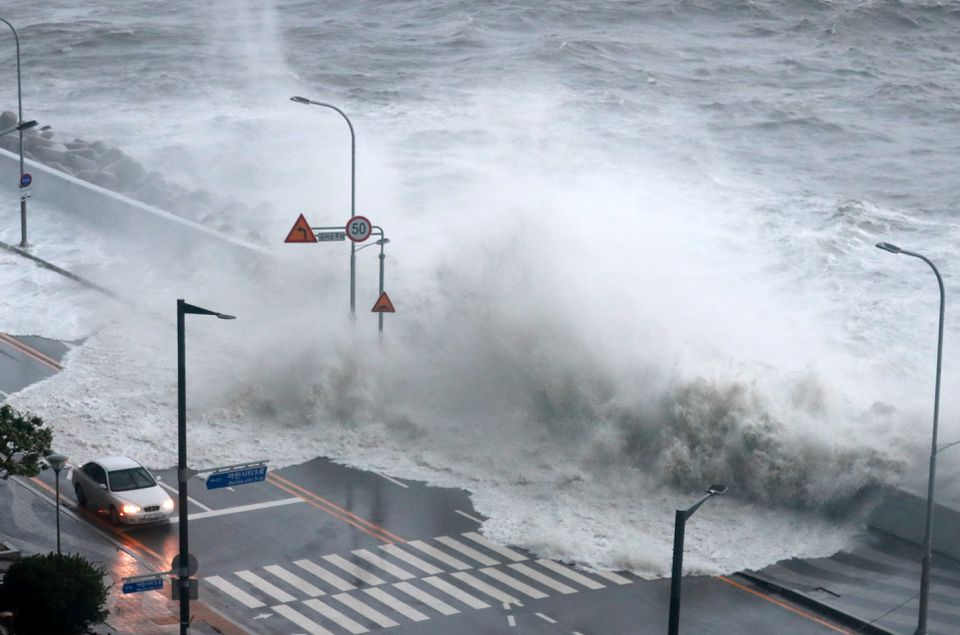Typhoon Hinnamnor Hits South Korea, Dodges Major Destruction And Power Outage
Typhoon Hinnamnor hits South Korea early on Tuesday as it knocked out power and left at least 2 persons dead, ten persons missing, and thousands displaced. One of the strongest typhoons to hit the country in decades hit the southern island of Jeju overnight before making landfall near the port city of Busan. The city was hit by huge waves and heavy rain, which damaged roads and shops along the beachfront.
Author:Paula M. GrahamReviewer:Rhyley CarneySep 07, 20222.5K Shares67.2K Views

Typhoon Hinnamnor hits South Koreaearly on Tuesday as it knocked out power and left at least 2 persons dead, ten persons missing, and thousands displaced.
One of the strongest typhoons to hit the country in decades hit the southern island of Jeju overnight before making landfall near the port city of Busan. The city was hit by huge waves and heavy rain, which damaged roads and shops along the beachfront.
When it hit land, the typhoon was moving at a speed of 43 meters per second, according to the government.
The Central Disaster and Safety Countermeasures Headquarters said that a 25-year-old man hasn't been seen since he fell into a rain-swollen stream in the eastern coastal city of Ulsan.
As a safety measure, more than 600 schools across the country were closed, and about 250 domestic flights were canceled. However, services slowly started up again on Tuesday as Hinnamnor headed toward Japan.
The island of Hokkaido, where Sapporo is, will have high winds and waves overnight and on Wednesday, according to the Japanese government. When the typhoon went through the southernmost island of Kyushu early Tuesday, it stopped trains and flights.
In the city of Pohang, South Korea, one person was killed by strong currents, and the Ministry of Interior and Safety said that eight other people were missing in underground parking lots that were filled with water.
Local TV station YTN showed a video of a wrecked car being pulled out of an underground apartment garage where muddy water had blocked the entrance.
Another person died when a landslide buried them in a house in Gyeongju, and as of Tuesday afternoon, one person was reported missing in Ulsan.
As rescue efforts continue and the military sends out amphibious vehicles, the number of people who have died could go up.
About 2,900 people have been forced to leave their homes, mostly in the south of the country. More than 66,000 homes lost power, and as of 3 p.m., only 45 percent of those homes had power back on (0600 GMT)
North Korea was also getting ready for the storm. On Tuesday, official state media said that North Korea's leader Kim Jong-un led a meeting in Pyongyang to evaluate the country's disaster response plans.
Kim said that it was very important to improve Pyongyang's response to disasters because "nothing is more precious... than the people's life and safety," according to the Korean Central News Agency.
Experts say that North Korea is especially at risk for flooding and heavy rains because it has lost a lot of trees and doesn't have good irrigation.
Conclusion
On Tuesday, it was expected to bring heavy rain to western Japan.
The Japan Meteorological Agency says that on Tuesday morning, the typhoon was in the Sea of Japan, which is called the East Sea in Korea. It was 100 kilometers (62 miles) from Tsushima island in Nagasaki prefecture in southwestern Japan.
Kyushu Electricity said in a statement that more than 35,000 homes were without power in the southwestern part of Japan called Kyushu.
Strong winds and rain stopped some of Japan's famous bullet trains, and many local trains also stopped running, JR Kyushu said.
NHK, a public broadcaster, said that at least 120 flights to and from Kyushu's airport were canceled.
Jump to

Paula M. Graham
Author

Rhyley Carney
Reviewer
Latest Articles
Popular Articles